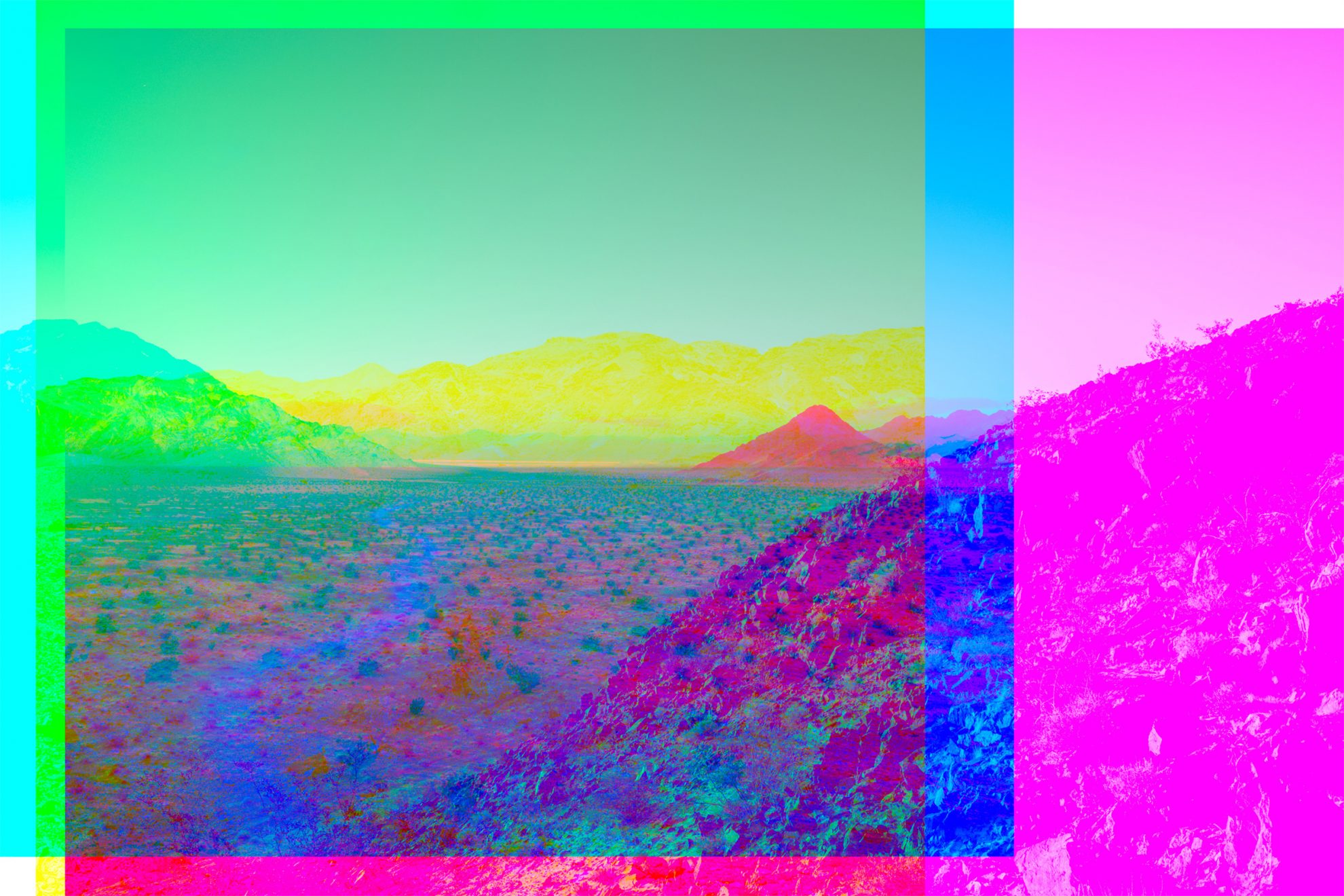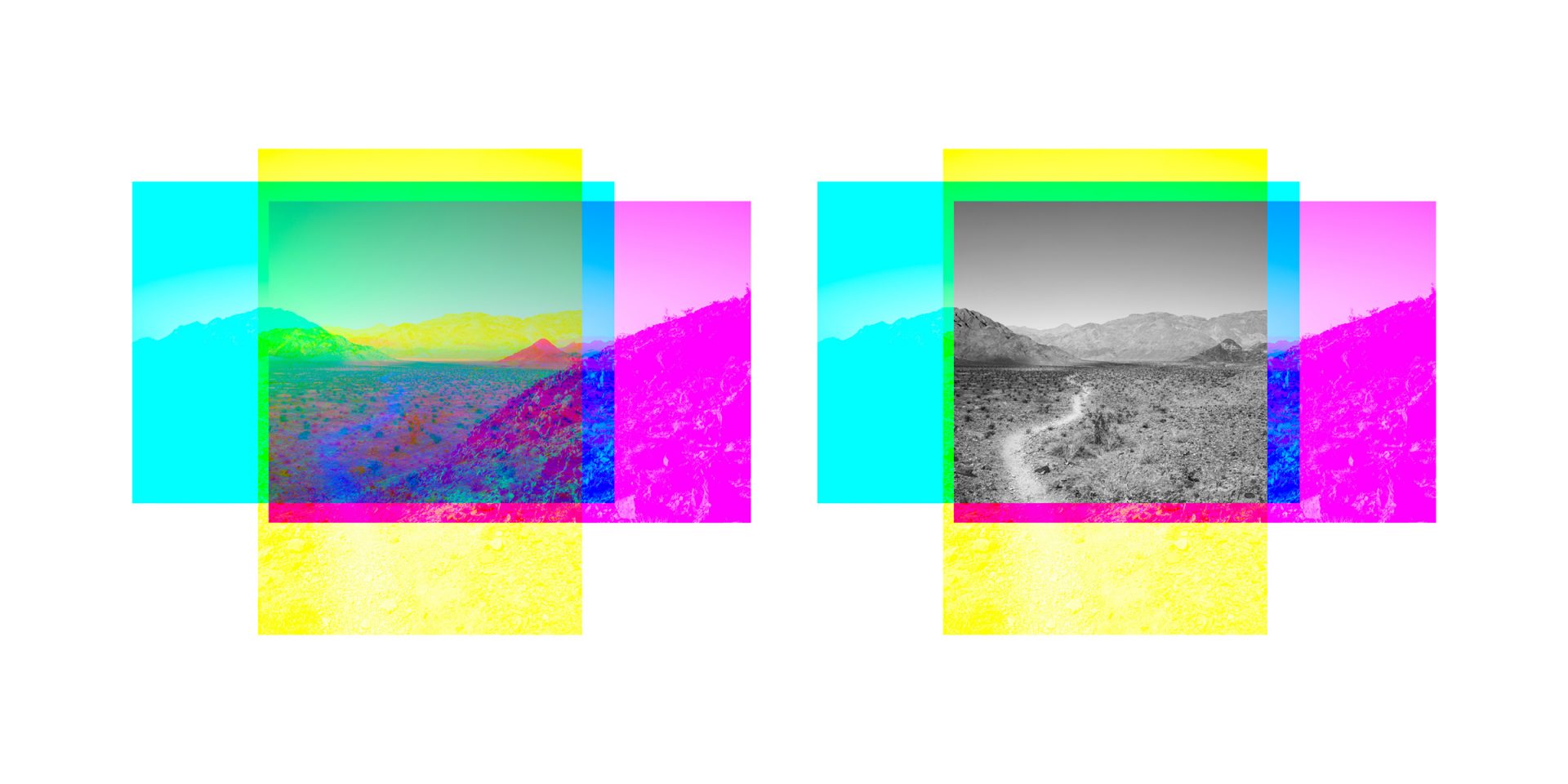
R-11;Y+57;G-11;C-40;B+90;M+104
Somewhere in Death Valley, CA
Pasadena, February 2021
Plausible Landscapes is a series of fictitious landscapes. They are superimpositions of three unrelated color photographs that were never intended to coexist. For each photograph, only one color channel of the CMY colorspace is kept. A new landscape emerges where the photographs overlap. With careful positioning and contrast filtering the artist never has to resort to physical masking. Once converted to black and white, the antagonistic colors are blended into a seamless amalgam, their diametrically different hues now sharing a grayscale value, lightness and darkness.
… Read More
It is an experiential exercise rather than precise science. The process is similar to loading three color strips of film into an analog filter-equipped photo enlarger and exposing a sheet of black and white panchromatic paper. The resulting images do not hold up to scrutiny. Absolute precision isn’t the goal, nor necessary. It is this careful arrangement of coincidences that allows the artist to lead the viewer across an imaginary line of plausibility. The inference of reality lies right at this threshold. Add an erudite description, albeit dubious, and doubt about what is true might just set in.
A good deception rarely relies on wildly altered facts which are easily verifiable. Instead, a little massaging here and there is all that is needed to mislead. The remnants of the source photos are purposefully left around the edges to hint at the process. It is one thing to dabble in conjecture, but one should always be clear about one’s intentions. The resulting softness of superimposing images that were never meant to be together imparts on the results a nostalgic quality reminiscent of yesteryear’s low definition lenses and overly sensitive to blue orthochromatic stock. A pervasive feeling that something is off makes the images difficult to judge, compositionally and in the choice of the subject. They tap into a past that is familiar but never was. All photographs are by the artist.
The series is available for purchase. Each photograph is printed by the artist on Hahnemühle Fine Art Baryta Satin 300 gsm. 11 Ink process. The limited edition photographs are signed, dated and numbered, and come with a certificate of authenticity. 24″x24″ prints.
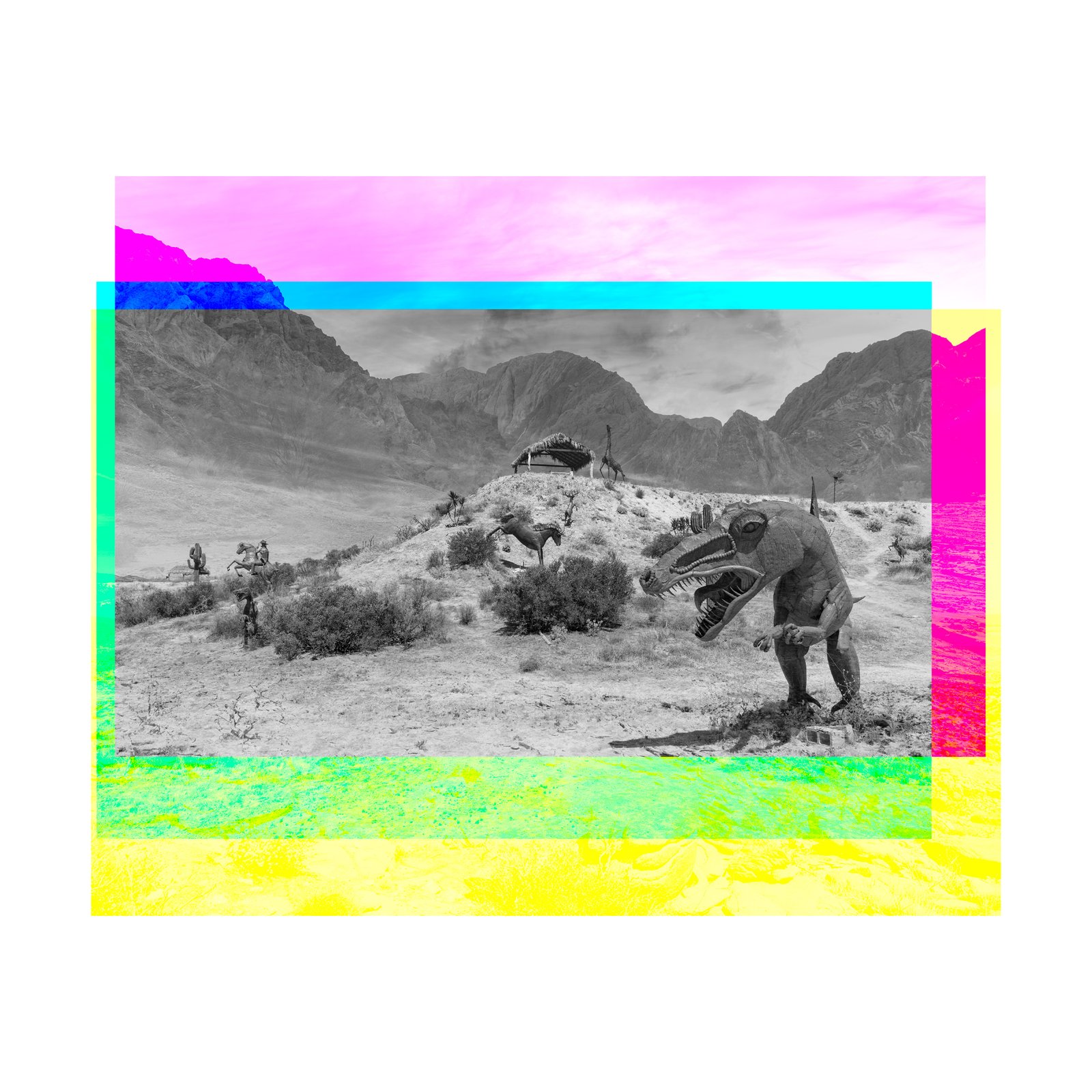
R+84;Y-23;G+48;C+1;B+14;M+63
Not too far from Aguanga, CA
It is said that Arthur Conan Doyle’s inspiration for The Lost World (not to be confused with the 1997 American science fiction adventure giant monster film of the same title) was a sculpture garden in Aguanga he came across in 1912 while evading immigration officers on his way from Tijuana, Mexico to Los Angeles. His original script did include giraffes and a masked horseman fighting Spanish soldiers, but his publisher suggested he keep it simple.
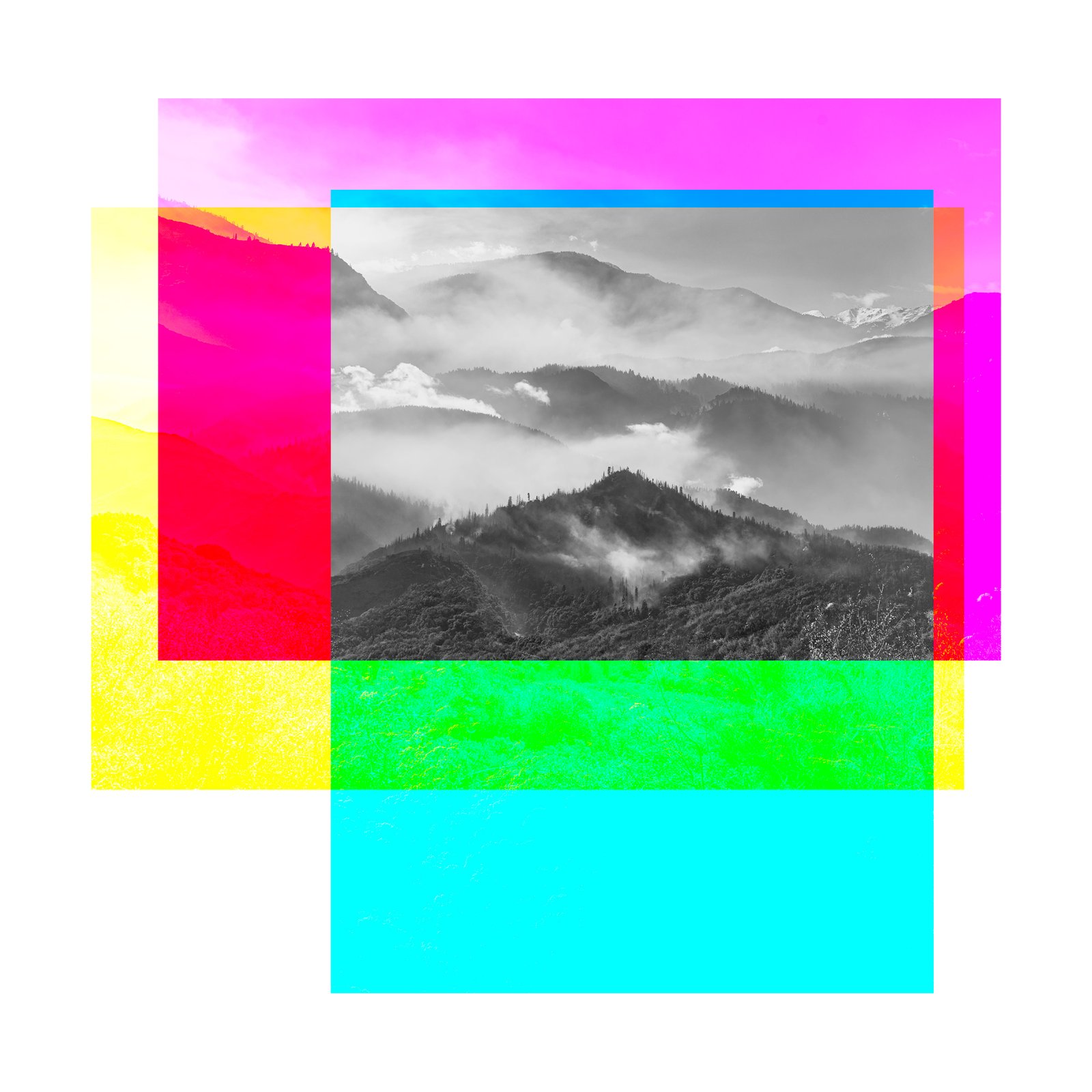
R+97;Y+92;G+129;C+131;B+128;M+100
Along the road to Mineral King, CA
Sequoia Trees, as everyone knows, are the tallest living beings in the world. Little less known is that Yvon Chouinard, founder and owner of outdoor clothing company Patagonia was the first man to ever climb the tallest of those giants. He confirmed that the Sierra Nevada, the Inyo Mountains and the Rockies can be observed from a single vantage point, something everyone suspected but had never confirmed. An avid falconer, Chouinard took the opportunity to release his favorite bird, Robin, never to see him again.
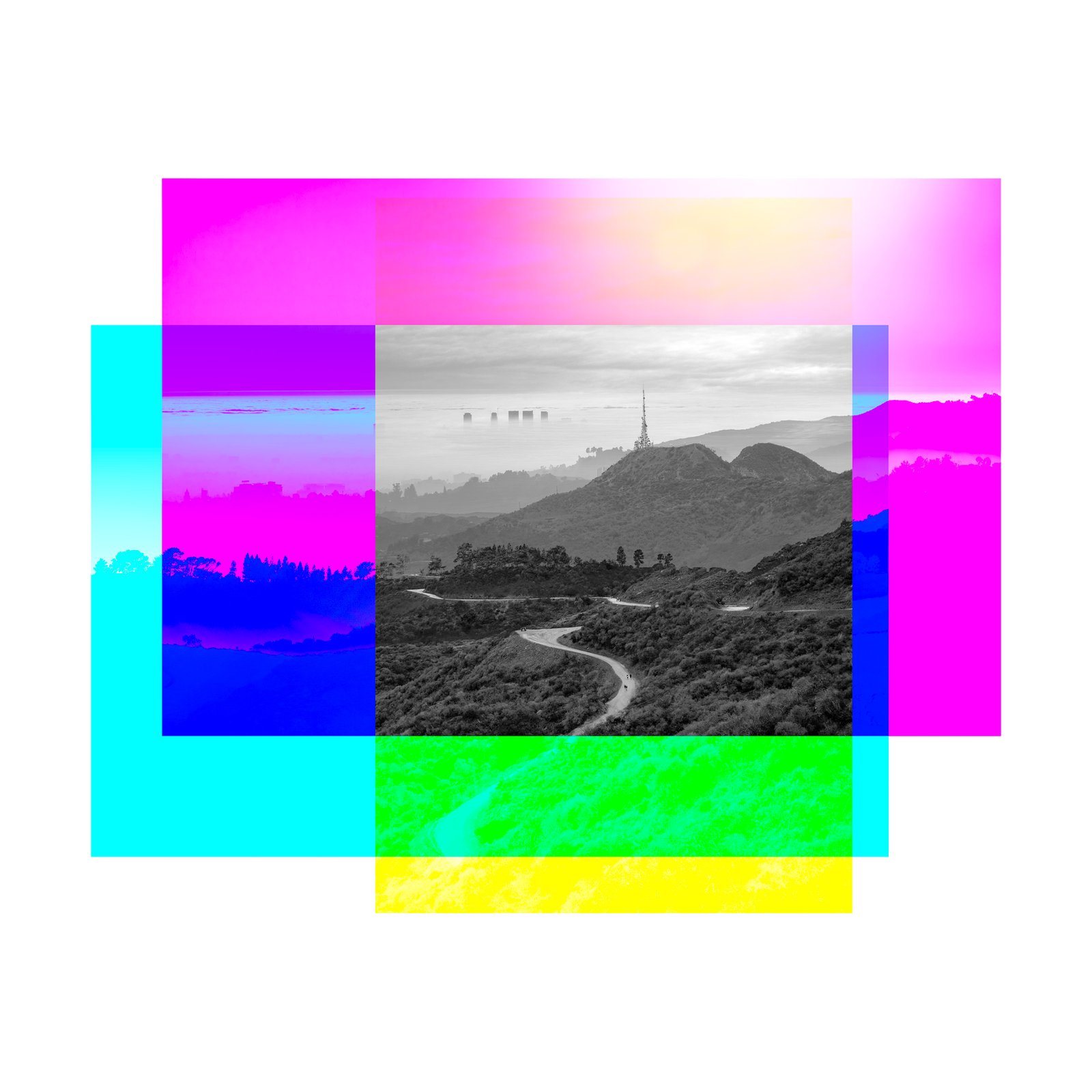
R+25;Y+15;G+40;C+91;B+138;M+52
in the vicinity of Griffith Park, Los Angeles
During the filming of LA LA Land (2015), it became apparent that in order to get that perfect shot of Ryan Gosling and Emma Stone tap dancing in Griffith Park, Mt. Lee and its famous sign would have to be moved South by half a mile. It was all for naught, the beauty shot of the movie ending up being a view of Burbank passing for Los Angeles. And that is 100% true!
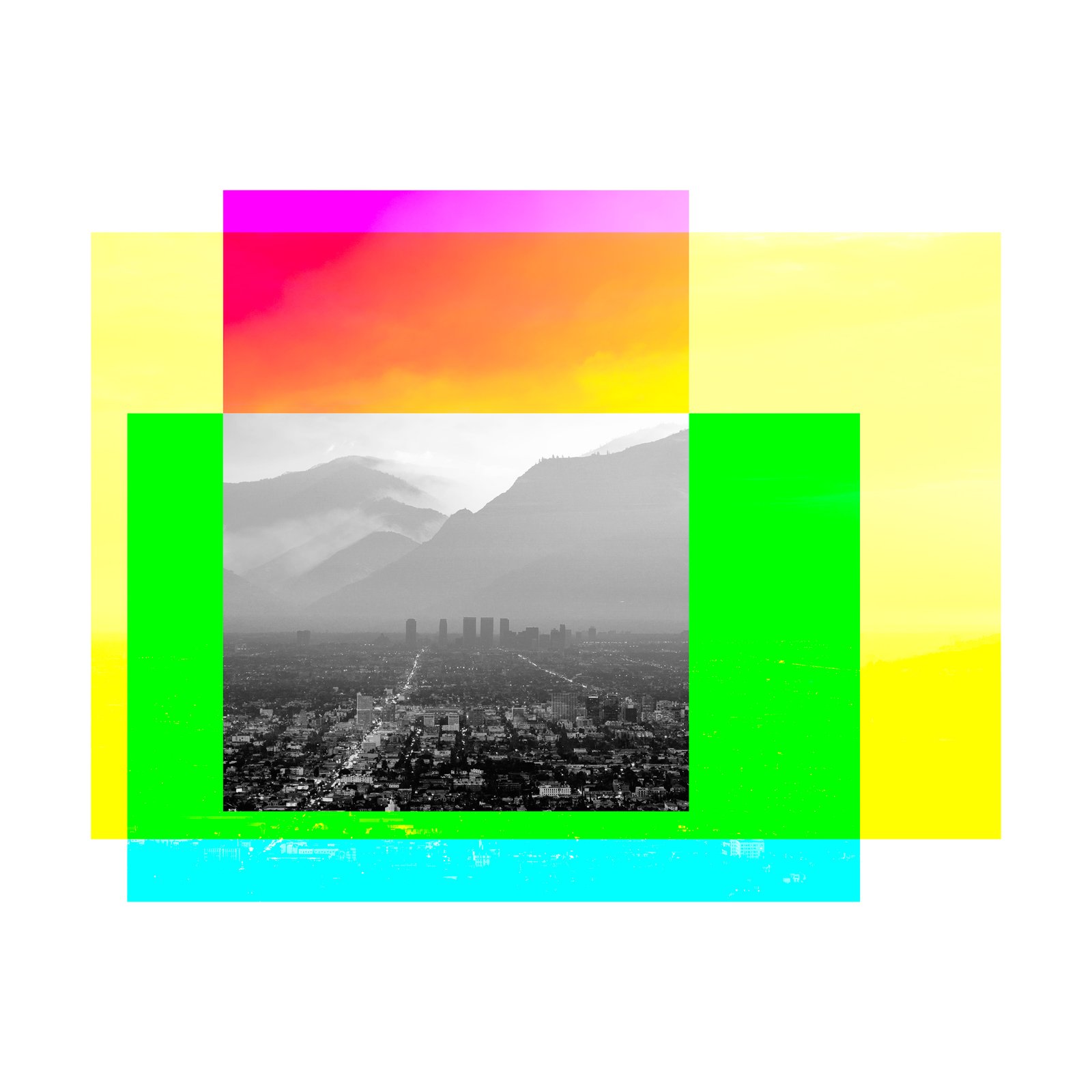
R+60;Y+70;G+71;C+83;B+94;M+95
Possibly El Dorado, CA
El Dorado is a city nestled between the Sierra Nevada and Inyo mountain ranges in California. Named after the mythical city of El Dorado, it was founded by Spanish priest Junipero Serra in 1770. It grew rapidly from a small pueblo to a large town when gold was discovered in the late 19th century. It is the largest city in the Americas not to have an airport, which is probably why you have never heard of it nor visited.
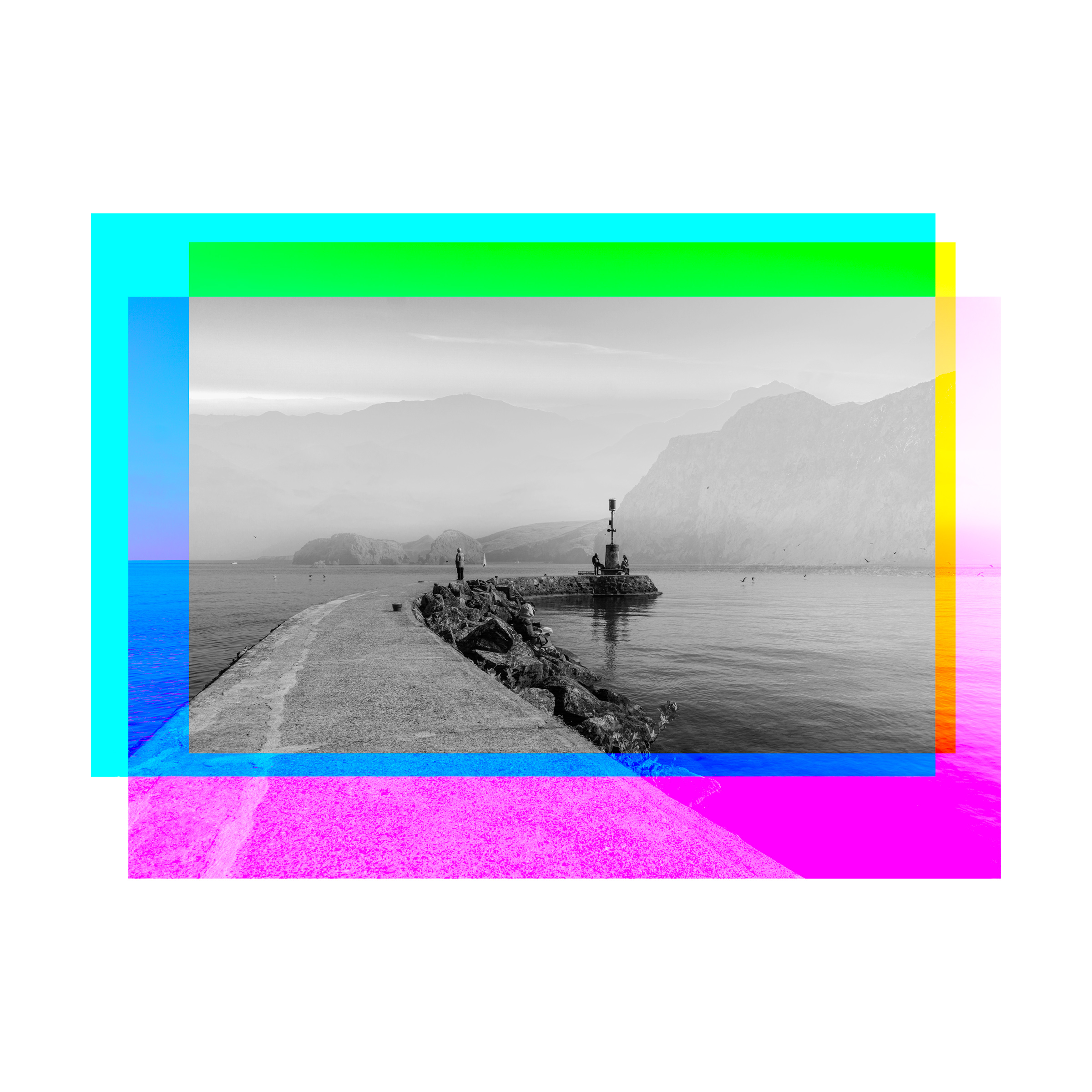
R+16;Y+95;G+59;C+104;B+45;M+23
A short drive away from Sacramento, CA
Lake New Geneva is an artificial reservoir in Northern California. Anyone who has visited the small Swiss town of La Tour-de-Peilz along the shores of Lake Geneva (Lac Léman) will experience an uncanny sensation of déjà vu. John Augustus Sutter was a German-born Swiss immigrant known for establishing Sutter’s Fort in 1839 that would eventually become Sacramento. The fort was situated at the end of the California Trail, an emigrant trail of 3,000 miles connecting the Missouri River towns to what is now the state of California. The fort is situated between the Sacramento and American rivers. A dam was built upstream on the American River to regulate the flow of water during heavy rainfall. Ever the sentimental, Sutter named the resulting lake Lake New Geneva (not to be confused with New Geneva Lake, Pennsylvania) in memory of his favorite childhood vacation spot. A jetty identical to the one from which he learned to swim as a child was eventually built.
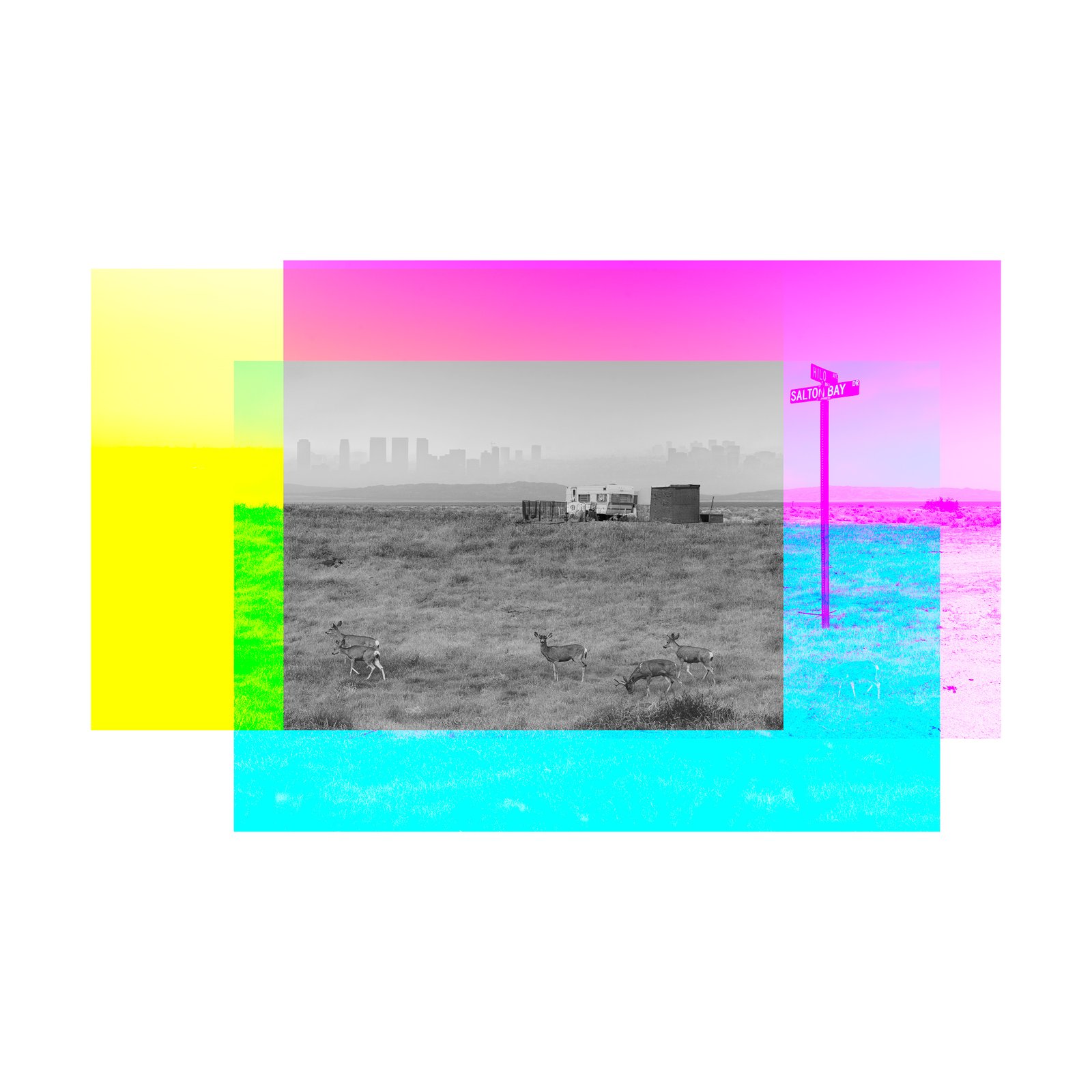
R+8;Y+86;G+13;C+16;B+7;M+13
East of Los Angeles, CA
A caravan sits on the site of what was Noriega Lodge. The lodge was a welcome resting stop for Basque in origin shepherds during their seasonal transhumance along the Pyrénées Trail. The trail runs from Baja California to Alta California. The lodge’s site is situated on the outskirts of Los Angeles, California. Legend has it that the large ears of the mule deer that graze along the trail are the result of hybrid speciation between the mules of the early Spanish friars and the local white-tailed deer.
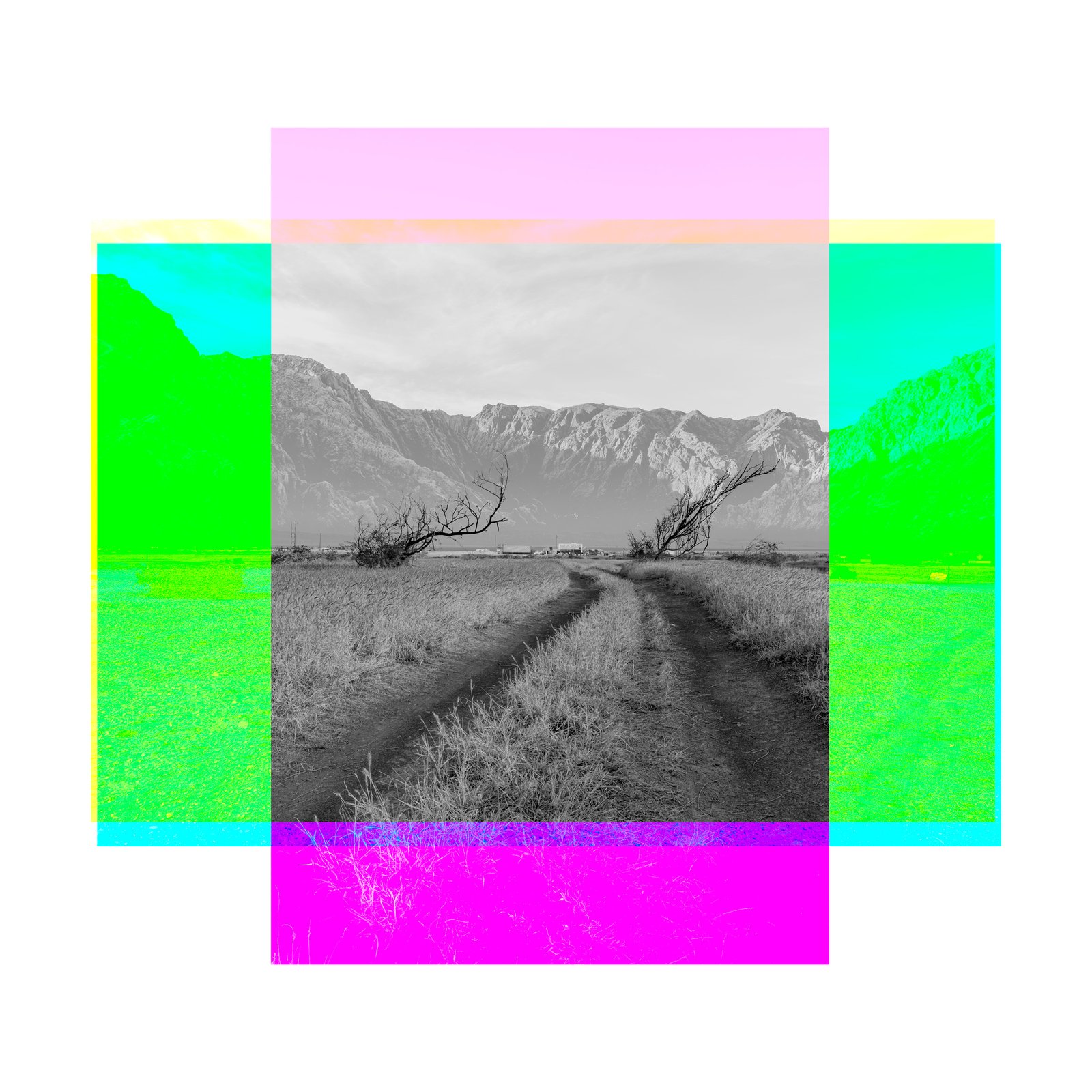
R-14;Y+102;G+7;C+77;B+85;M-26
Definitely not Salton City, CA
Before there was Salton City, California, there was Salton City, Oregon. Unlike today’s desolate and dry Salton to the South, its northern namesake was situated in a lush valley at the end of the Oregon Trail. Pilgrims who had made it across the great divide knew their ordeal would soon be over at the sight of two leaning juniper trees. The settlers were forced to leave at the onset of the Sheepeater Indian War, the last conflict in the Pacific Northwest between native tribes and the expanding United States. They resettled in Southern California and founded a new town, naming it after the cherished place they were forced to abandon. The junipers in Oregon are still there. A small way station is all that is left of the idyllic town.
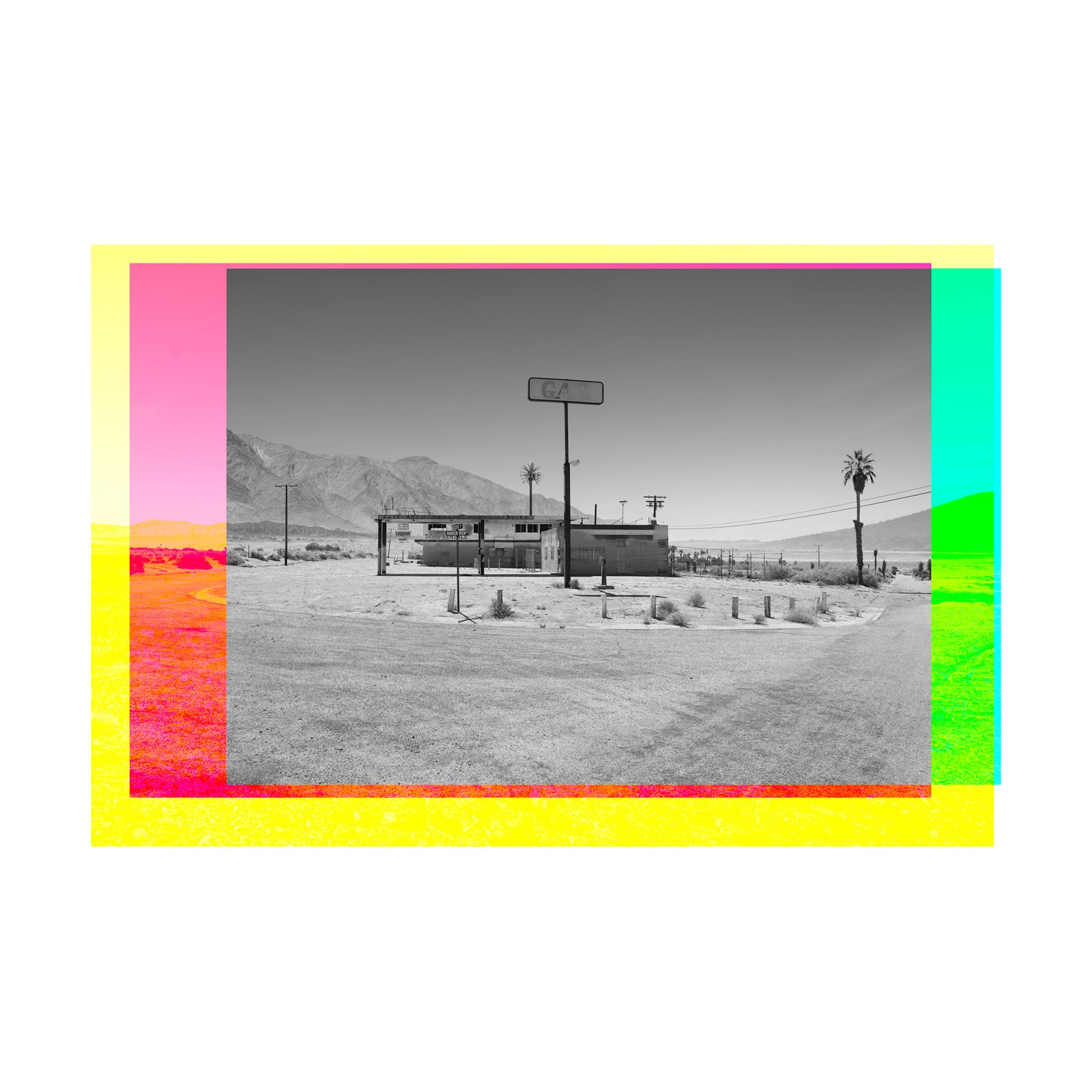
R+2;Y+78;G-4;C+20;B-3;M+12
A stone’s throw from Borrego Springs, CA
El Toro Loco Gas Station and Liquor Store is situated on the outskirts of Borrego Springs, California. It didn’t originally go by that name. In 1936, while pumping gas during a scouting trip in the California outback, American author Mungo Leaf noticed a lonely bull that only seemed to be interested in sniffing out the orange poppy flowers. Inquiring with the attendant about the bull’s strange behavior, the only response Mungo got from the Spanish-only speaker was “El Toro? Está loco!” The rest is history. Leaf went on to write The Story of Ferdinand the Bull who would rather smell flowers than fight. The book was subsequently made into an animated short by Walt Disney Productions. Upon seeing the hugely successful movie, the attendant remembered the encounter and suggested to the owner he rename the gas station.
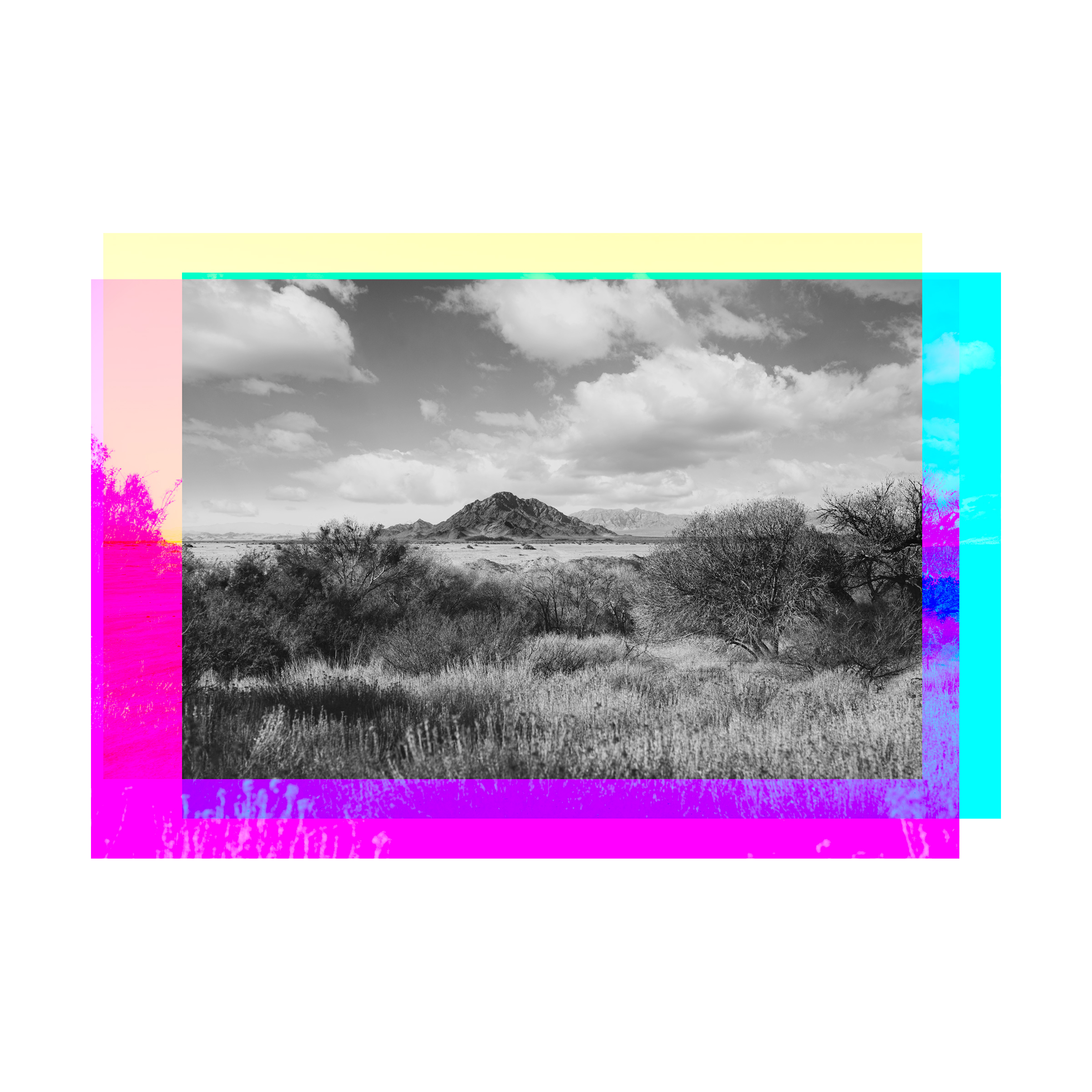
R+0;Y-2;G-26;C-17;B+7;M+6
Within the Mojave National Preserve
Cowhole Mountain is a small mountain in the Mojave National Preserve, California. The region is volcanic In origin, dry as a bone, with summer temperatures averaging 90 °F (32 °C), with highs exceeding 105 °F (41 °C). Few organisms can make a living in such a harsh environment, although a small but lush patch of greenery can be found in the vicinity of Cowhole Mountain. Genetic testing has revealed that the plants are closely related to the vegetation of Santa Cruz Island off the coast of California, thirty or so miles from Santa Monica and over two hundred miles from the preserve. It is surmised that oceanic winds carried the seeds of these plants to deposit them where the Granite Mountains and Providence Mountains form a barrier to prevailing winds. An underground artesian aquifer at the base of those same mountains provides enough subsoil moisture for the plants to thrive.
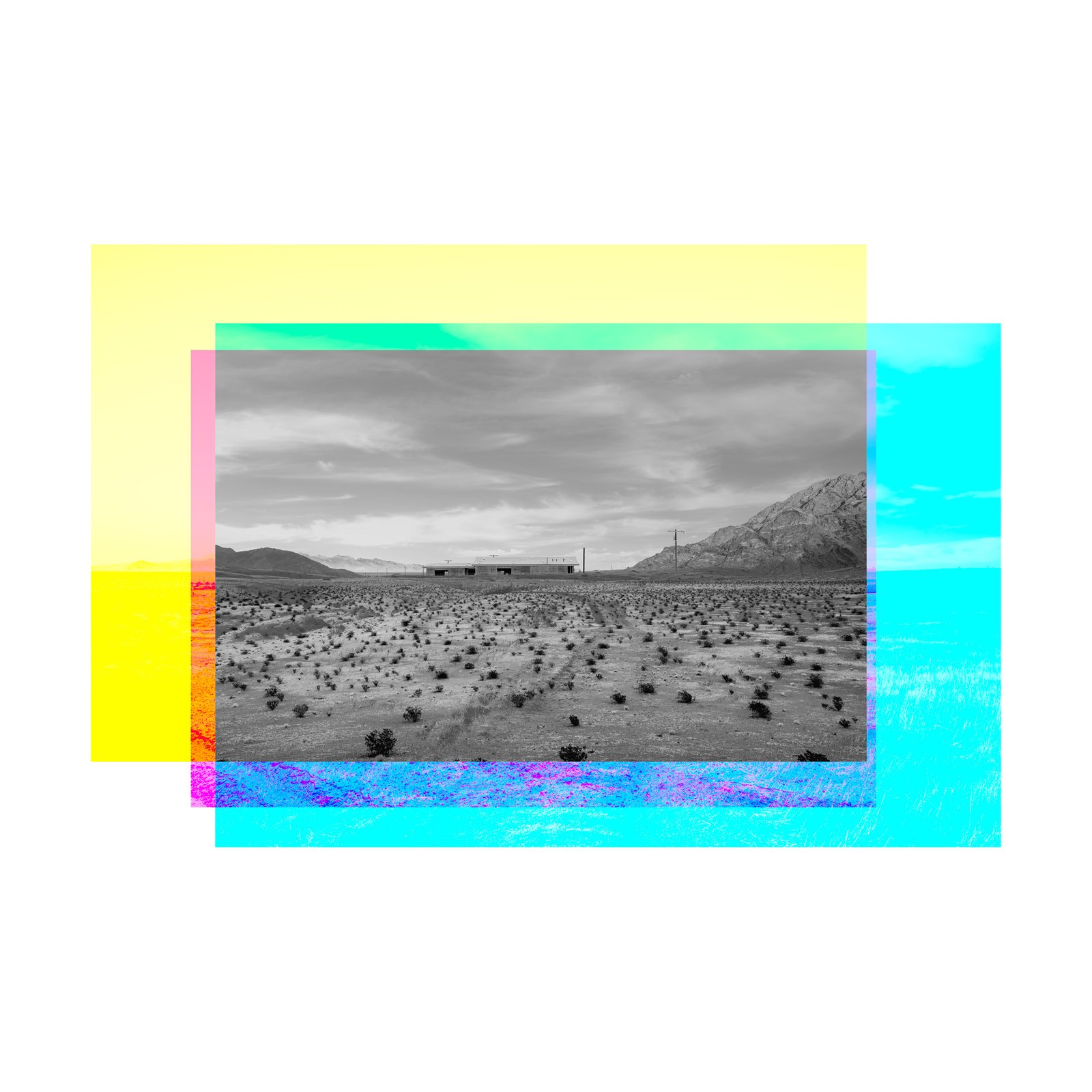
R-12;Y-6;G-2;C+7;B-11;M-16
Near Carson City, Nevada
Completed in 1861, the first transcontinental telegraph was a line connecting the East Coast of the United States with California by means of a link running through Carson City, Nevada. For ten years the line was the only mode of instant communication between the two coasts. Because of strong winds originating in the Great Basin and frequent blizzards, accessibility for maintenance was of utmost importance. A series of stagecoach stops were built to provide shelter and horse feed for the maintenance crews working the line between Omaha, Nebraska and San Francisco, California. It is rumored that wind would make the wires sing to be heard over long distances. Known as the Siren of the West, it allowed many travelers to find their way to safety especially during a blizzard. Unlike its counterparts of Greek mythology, this siren is of the benevolent kind.
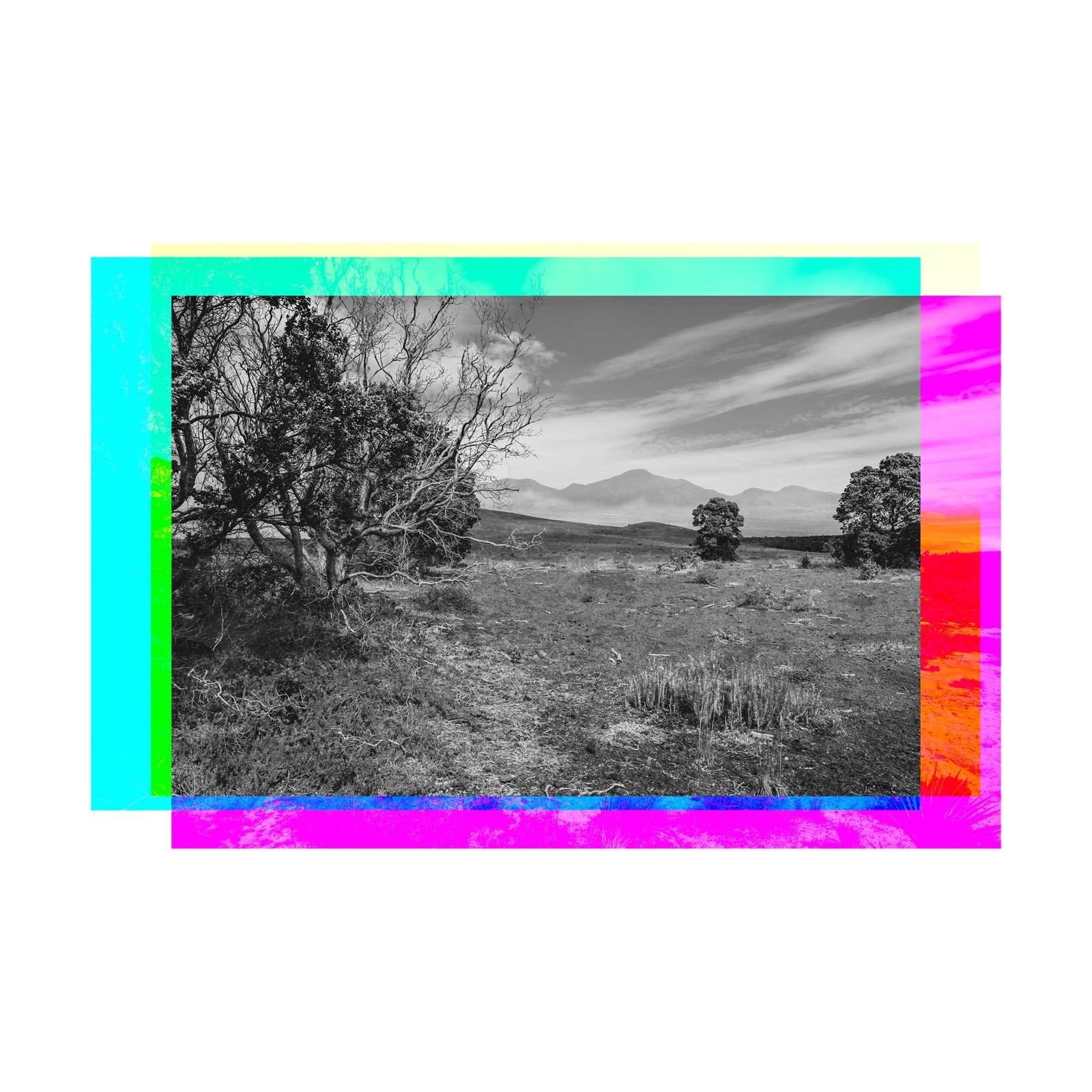
R+92;Y+54;G-25;C-33;B-12;M+18
In close proximity of Kīlauea crater, Hawaii
This photograph is of particular interest. It was taken on the edge of Kīlauea crater on the Big Island of Hawaii. Anyone living on a West-facing coastline will be familiar with the optical phenomenon called a green flash. This event occurs around the moment of sunset. When conditions are right, a distinct green spot is briefly visible above the upper rim of the Sun’s disk. Conversely, if looking East, the same atmospheric conditions conducive to a green flash will generate a mirage, misleading the observer to believe that some geographic features are much closer than they really are. The heat generated by the nearby volcano along with the pristine atmospheric conditions of the most isolated archipelago on earth make the mountains in the background seem much closer than they really are. In fact, those mountains are on the nearby island of Maui.
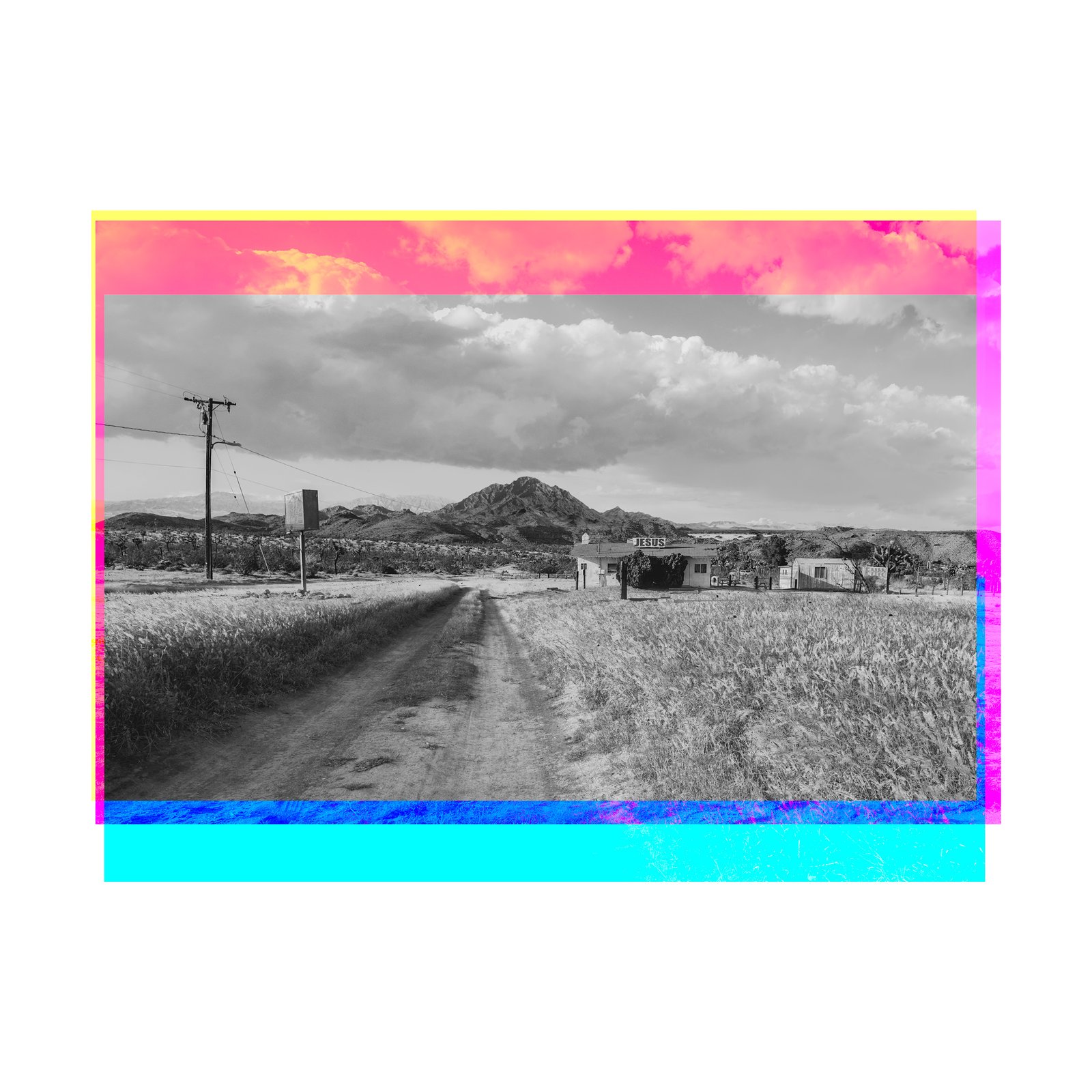
R-9;Y-39;G+3;C-10;B-23;M-16
Outside Joshua Tree National Park
A ramshackle structure bearing a big “Jesus” sign can be found near Joshua Tree National Park. A 19th century county surveyor map lists it as Last Chance Chappel [sic]. Sheriff records suggest that the road North was of ill repute with no water or shelter for a hundred miles. Surviving the trip was uncertain. As the recorded number of casualties suggests, a stop at the chapel would have been wise before embarking on such perilous journey.
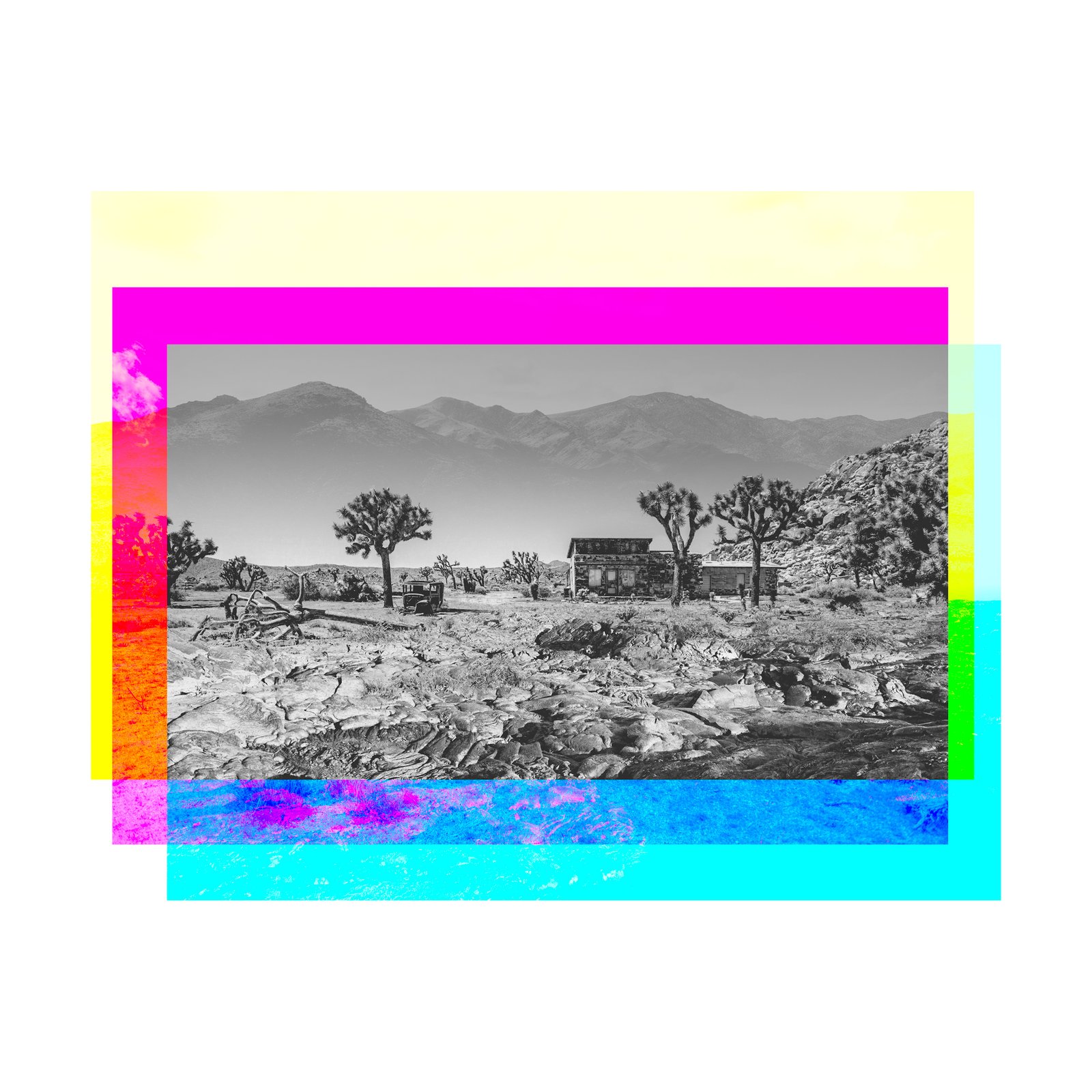
R-50;Y+109;G-33;C-49;B+29;M-7
Within the boundaries of Joshua Tree National Park
A short hike away from the main road, hikers may come across an abandoned ranch right in the middle of Joshua Tree National Park. The exploitation was abandoned in a hurry after hot lava started bubbling up from the ground. It is believed that the 1906 San Francisco earthquake may have been strong enough to disturb a lava chamber over 400 miles away along the San Andreas fault.
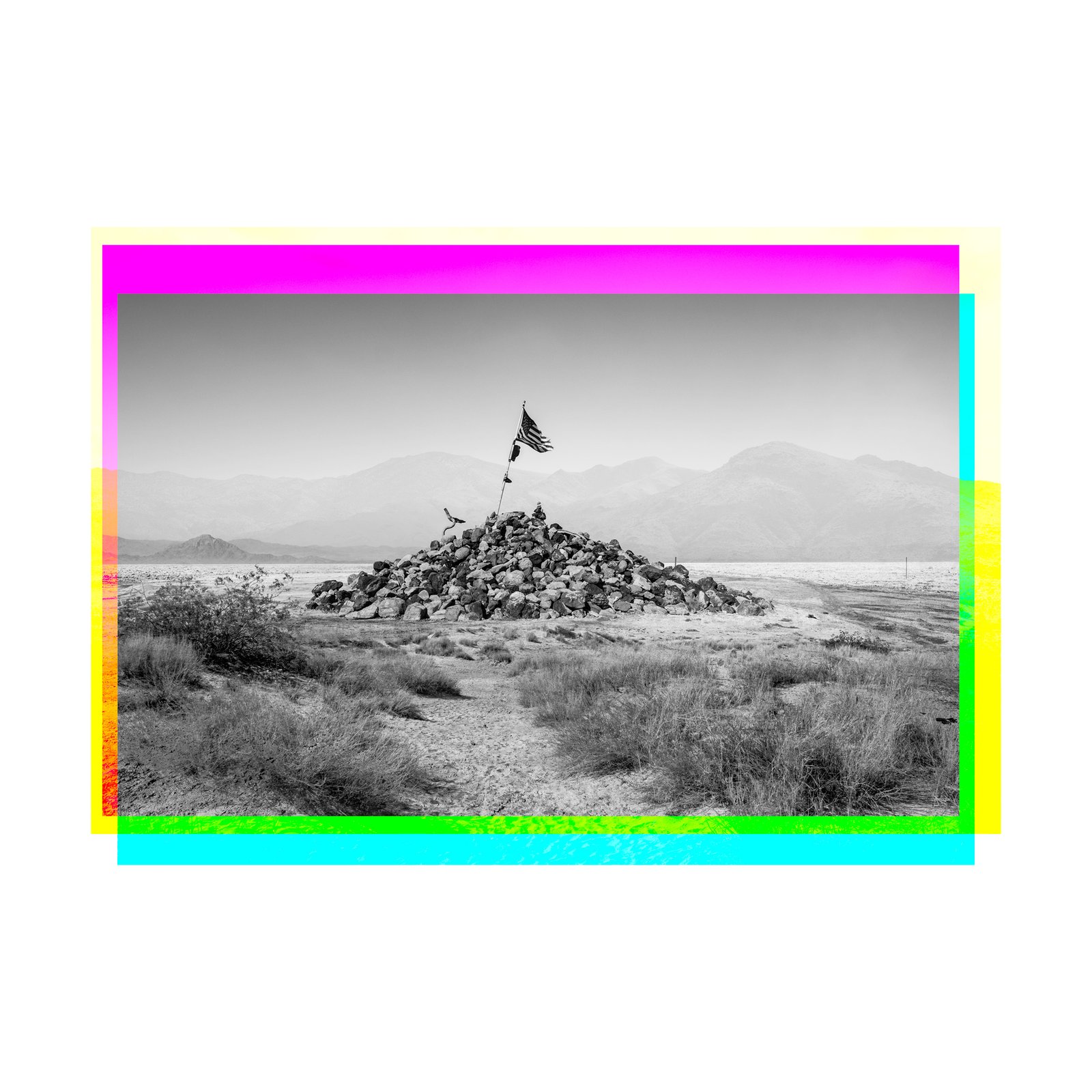
R-7;Y+81;G-47;C-17;B-3;M+3
Location uncertain
In the middle of the Mojave Desert, one may stumble upon a strange mound known as the Travelers’ Monument. It is the custom for every passing voyager to add to the mound with anything of their liking. Legend has it that a plaque is buried at the base that reads “On this site in 1897 nothing happened.”
